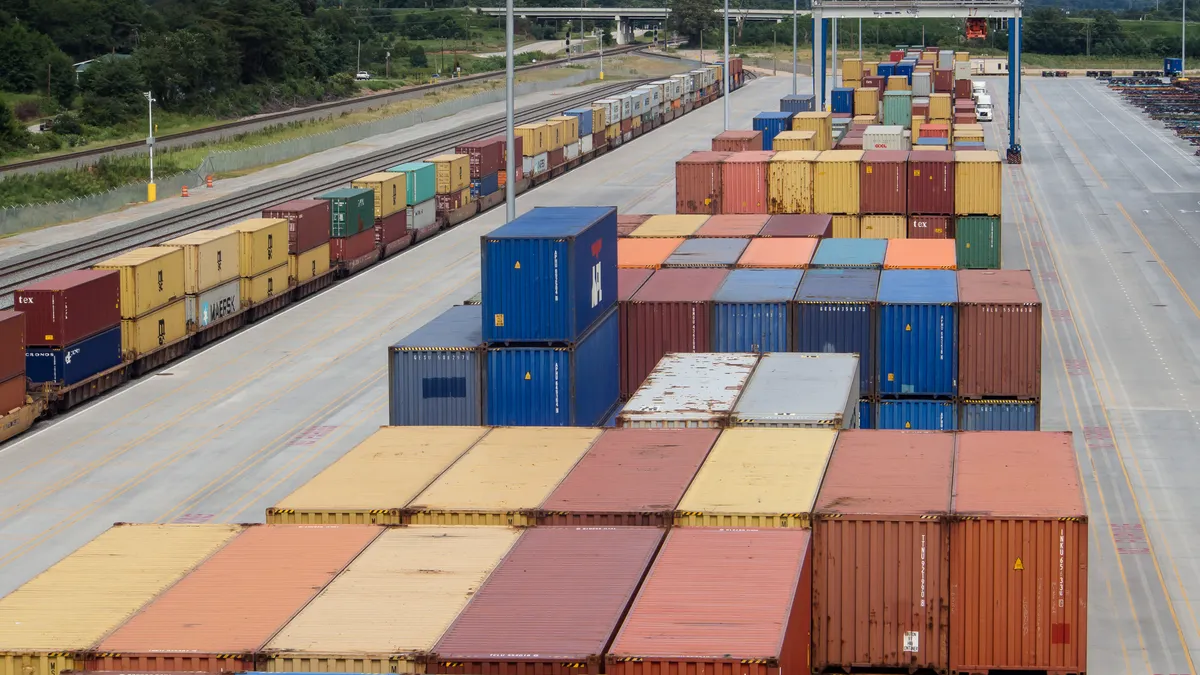CHICAGO – Carriers optimistic the freight market was starting to show signs of a turnaround should prepare for weak conditions to linger possibly into late 2025, according to economic analysts.
Behind the bleak forecast was weak U.S. economic data shared during the Journal of Commerce Inland Distribution Conference. Saturated retail inventories, rising interest rates, and elevated costs continue to weigh on freight markets' ability to recover, despite some positive short-term signals behind consumer spending, three panelists said during a Sept. 26 session.
“We’re on a downward path,” said Paul Bingham, director of economics and country risk transportation consulting for S&P Global. “Really, if we’re going to get into any recovery in terms of the overall economy, it’s not going to be until 2026.”
A bright spot in analysts' prediction, however, is that the U.S. economy will not fall into a recession this year. Instead, growth will be slow: S&P Global forecasts the nation's GDP will grow by 2.3% this year, and may only top 1.5% in 2024.
Consumer spending complicates bleak forecast
While carriers still face a freight recession, some positive signals are emerging.
The Federal Reserve’s efforts to curb domestic inflation have had some impact on consumer spending, said Bingham, though not enough to tip the country into a full economic recession. Instead, consumers continued to buy goods but not at levels needed to drive down inventory.
The spending patterns have led retail inventories to start normalizing. Meanwhile, the number of trucking firms exiting the market has started to slow as rates and capacity stabilize.
But higher costs for assorted consumer staples including fuel and food, as well as rising interest rates on everything from credit cards to car loans and mortgages will further hinder spending, Bingham said.
If consumers aren’t buying that means manufacturers aren’t producing, which translates to no demand for shipping, said Bingham, noting, “there’s no rebound coming in terms of a reversion to the online spending and so forth on goods that would drive freight demand.”
A more typical peak season?
In the short term, Larry Gross, president and founder of Gross Transportation and Consulting, said the 2023 peak season will be normal when compared to historical trends.
Gross, who specializes in intermodal services, said peak in intermodal historically occurs the last week in September. Recent data shows intermodal volume is about 6.4% above the average non-holiday week, which he noted, “is what a normal peak season looks like.”
Gross’ forecast reinforced pessimistic messages shared by trucking executives who spoke during the Deutsche Bank’s 2023 Transportation Conference in August. J.B. Hunt Transport Services Intermodal President and EVP Darren Field said that customers weren’t predicting a significant peak season, while Werner Enterprises Chairman, President and CEO Derek Leathers anticipated a muted peak season based on an uncertain holiday outlook.
Looking further ahead, Bobby Holland, vice president and director of freight business analytics at U.S. Bank, said he is watching for improvements in new home construction for signs the economy will turn a corner.
Though an economic rebound depends on many things, when new home sales are strong, it lifts other sectors through heightened shipments of building materials to sales of assorted home goods and appliances.
“We know that interest rates are still higher and that housing starts are at their lows," Holland said. "When you couple that with minimal housing inventories in some areas of the country, we’re watching to see whether this continues to suppress freight.”













